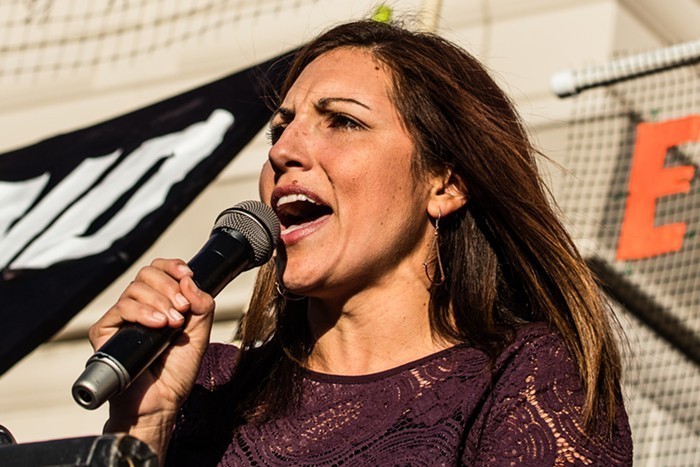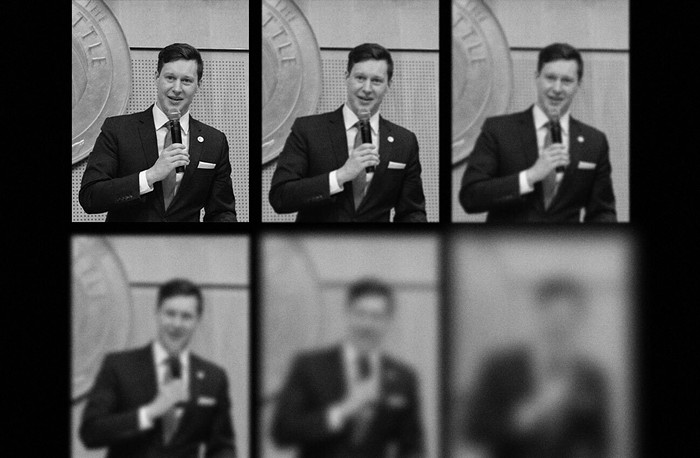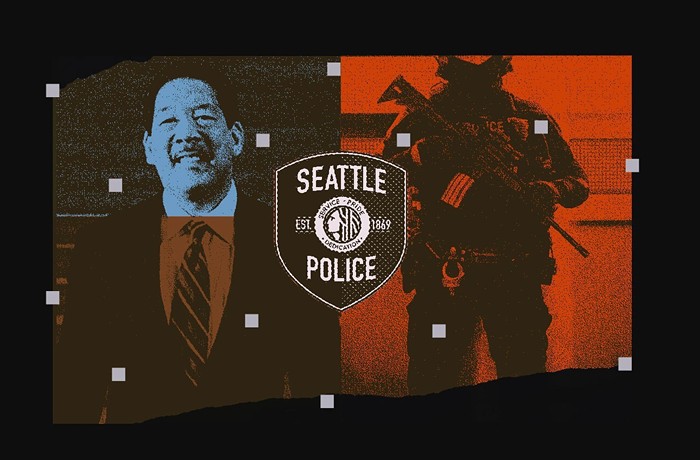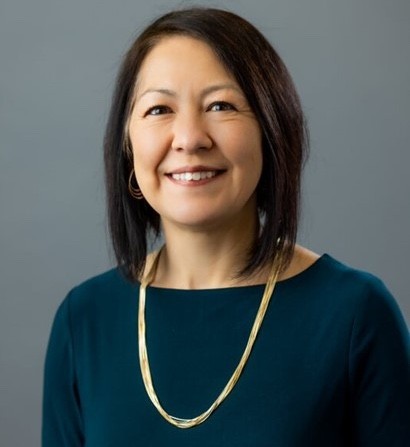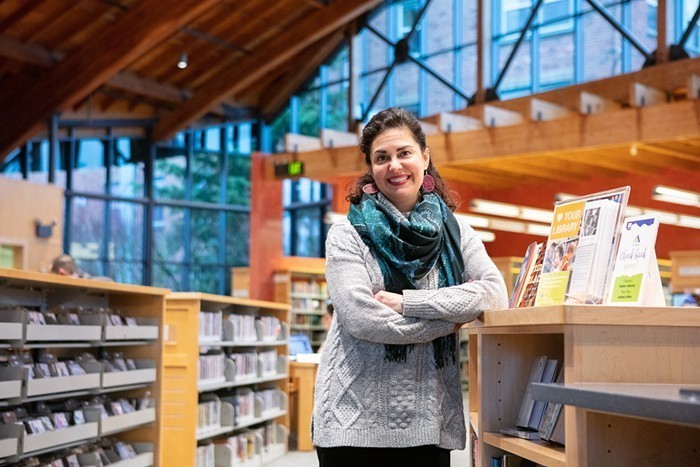
In a press conference on Friday, Mayor Bruce Harrell directed the Seattle Police Department to embrace the strategy of hot-spot policing to rid the city of disruptive and criminal actors who are, in his words, “destroying the fabric of our neighborhood."
Though Harrell reeled off a list of recent arrests near 12th and Jackson, an intersection in Little Saigon that has drawn lots of news coverage lately, the groups most attuned to the area's public safety have yet to see a change in the neighborhood.
“I don't see a change from last month [in Little Saigon]. Not yet," said Tanya Woo, a leader of the CID Community Watch, which has patrolled the neighborhood as an unarmed alternative to police since the summer of 2020. "But I also don't believe the SPD is the answer,” she added.
Friends of Little Saigon executive director Quynh Pham was not impressed, either. "We have definitely noticed a little bit more police presence. But I think the question is, is their current strategy effective? We haven't really seen results. The same crowds and types of crimes continue to happen," she said.
King County Public Defense Director Anita Khandelwal affirmed the concerns of the neighborhood groups, saying, "The amount of money we will spend on hiring more officers to patrol 'hot spots,' on prosecutors to file those cases, on public defenders to defend them, on judges to hear them would be so much better spent on housing people and meeting their needs."
Hot-spot policing is an approach to crime that focuses police personnel and resources in specific high-crime areas. Seattle has seen several iterations of this tactic, including from former Mayor Ed Murray, who launched the 9 ½ Block strategy in 2015 to crack down on petty crime and drug deals downtown. Khandelwal said that most of the people arrested during that time were released after being jailed for several months.
"The lawyers in my office have represented countless individuals who have been prosecuted as part of this and other failed strategies. We see that jail does nothing to address our clients’ unmet needs. We know that it destabilizes our clients’ lives," she said.
Some of the major proponents of that strategy back then now hold high offices in city government again. Scott Lindsay, who worked as Murray's public safety advisor, now works as the Senior Assistant City Attorney; former City Councilmember Tim Burgess works as Harrell’s director of strategic initiatives. Both propagated the “Seattle is dying” narrative, a worldview created by the local Sinclair station.
This time around, the cops said they're focusing their energy on Little Saigon and other areas. Harrell didn’t go into great detail about the conditions on 12th and Jackson, but he said, “For those that work or live around here, you know exactly what I'm talking about.”
Vandalism, theft, and drug trade in the neighborhood made headlines last year. The Seattle Times Editorial Board said "to walk [Little Saigon's] streets is to viscerally experience neglect." The board pointed fingers at the electeds who represent this area, with former Mayor Jenny Durkan topping the list.
When tough-on-crime Harrell took the driver’s seat, he wouldn’t let the government neglect Little Saigon – at least not when it came to policing. During the press conference, Harrell said that in the first 21 days of January, SPD made 23 felony arrests and 14 misdemeanor arrests in the area. The program will continue beyond these 21 days, according to the Mayor’s office.
A spokesperson from SPD, Sgt. Randy Huserik, said he was not able to give specific numbers of officers working in the area compared to past, non-emphasis patrols.
The strategy has its share of critics, including former Washington, D.C. police chief Cathy L. Lanier, who in 2015 argued that her department's first iteration of hot-spot policing hurt community trust and tied up cops in court testifying on a bunch of low-level offenses, which left neighborhoods “in the hands of the more violent predators.” Harrell’s decision to ramp up hot-spot policing could lead to similar issues as the City Attorney's Office tightens up filing deadlines for incoming cases to just five business days while the mayor and the SPD deploy officers from what they claim is a “depleted” police force.
The strategy is also expensive, Khandelwal warned. She said that putting someone in jail for just 20 days costs $3,100, not including the court and policing costs that precede the jail sentence. What's more, she said, is these arrests "do not address any root causes, and often only leave people saddled with the stigma of the criminal legal system involvement, leaving them with no way to meet their basic needs."
Woo said during the month of January she noticed police cars parked near 12th and Jackson. The presence seemed to deter some – Woo noted there were fewer people in the area than usual – but she said the usual crowd “walked around the block and just continued on with their transactions around the corner.” The hot-spot approach in this instance appeared to push the activity elsewhere, which critics of the policing strategy argue is the inevitable consequence of the method.
Pham, who also co-chairs the CID Public Safety Council said the community member from the west side of the freeway have voiced concern that criminal activity is starting to move in from 12th and Jackson.
Huserik did not say what the department was doing to avoid potentially sweeping crime elsewhere, but he said “the intent isn't to move the criminal activity from one area to another, but to bring an end to it, either through arrests and prosecutions, or through coordinating with other city agencies in getting into the area and contacting people to get them the services from the city that they need.”
As of this weekend, Woo said activity on 12th and Jackson was about the same. On Saturday night she saw about 100 people in the area, many dealing drugs. That same night, the watch group performed CPR on two men they found face down and unconscious on the pavement in the CID.
The watch group brainstormed ways to combat the growing drug problem, and concluded that a handful of well-meaning volunteers armed with sandwiches and water bottles would not be enough. The group already has Narcan, and they plan to get testing strips to allow people to test drugs before they consume. Still, Woo said the area would be better served by trained social workers.
During the press conference, Harrell said the city government will continue to spend “tens of millions of dollars” to provide shelter and social services to those in need in Seattle. According to the Mayor’s Office, in the first 21 days of January the police engaged in 100 interactions at 12th and Jackson beyond arrests, including providing medical assistance, referring people to social services, and recommending others for diversion programs.
Police will continue efforts to be highly visible in Little Saigon, but hot-spot policing won’t stop there. Harrell declined to name the intersections and areas that can expect this treatment in the press conference, but he told reporters, “If you want to know where, just read the blogs. The public knows where they are.”
According to SPD’s latest annual crime report, last year officers were most often dispatched to Rainier Valley Square in South Seattle, the Target downtown, Harborview Medical Center, Westwood Village in West Seattle, DESC Hobson Place, supportive housing in the Judkins Park neighborhood, and Addison Apartments in Pioneer Square.
While these locations and others may see similar treatment, so far, Woo cannot say if the model will work for Little Saigon.
“We’re not really seeing much change, but it’s only been a month, so hopefully we will,” Woo said.

